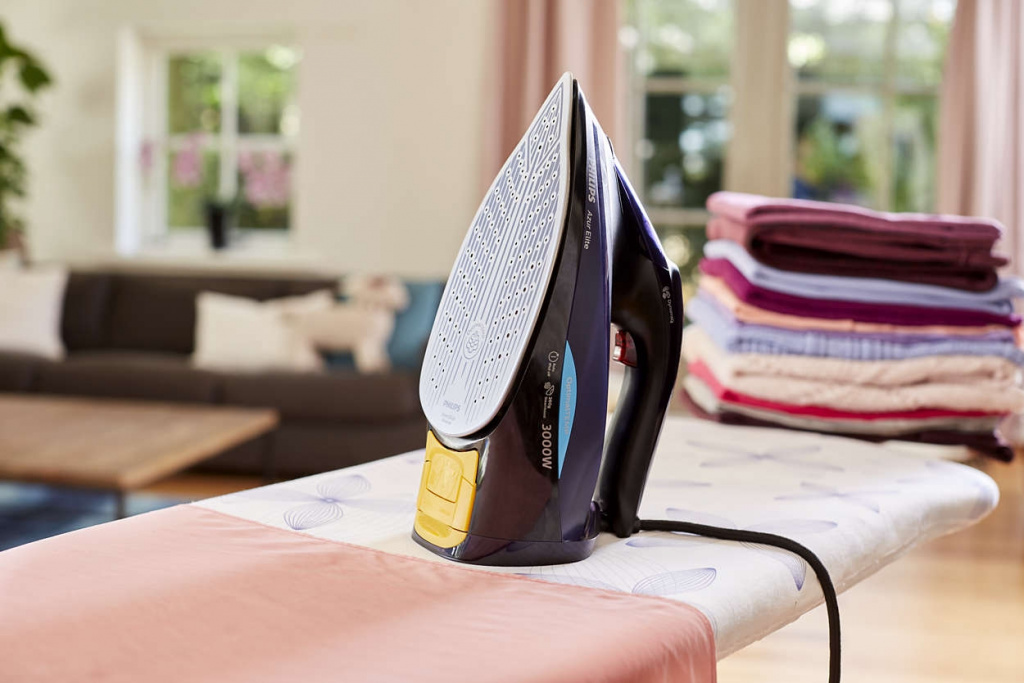Only not this! Washed things are not dry in the morning, and you only have 1 hour before going out? Don’t worry, we’ll help you solve this problem.
Familiar situation. First of all, don’t be dramatic. If there is no extra need to wear the washed item, feel free to wear another outfit. Impromptu will give you mystery and charm.
But in the following situations, you really have to resort to emergency measures. Read our recommendations if you really have nothing else to wear or urgently need:
-
Suit for a responsible event or performance.
-
Office uniform.
-
Party dress.
-
Jeans and socks for a date.
Precautionary measures
Do not rush to build a fire of friendship in the middle of the room. Read the safety tips:
-
It is strictly forbidden to dry things over a gas burner, in a gas oven. You can not only burn holes in clothes, but also burn an apartment.
-
Do not hang things on electric radiators, heat fans, heat guns. In the event of a malfunction of the devices, you can get an electric shock.
-
Do not put laundry in the microwave. The fibers of the fabric, in the truest sense of the word, are boiled and destroyed.
As for the hair dryer, we will not completely prohibit its use. But always keep in mind that this appliance is not suitable for drying clothes, it overheats very quickly and fails.
Fast Drying Methods
Shall we dry? What comes first, shirt or jeans? Irrelevant. First, let’s call on the help of natural elements.
Burning sun and frost
On a hot day, light clothing will be dry in half an hour. Direct sunlight is the best ally in emergency drying.
Hang the clothes, spreading them as much as possible and eliminating the overlap of the fabric:
-
Hang jeans upside down and fasten at the very edges.
-
Dresses can be fastened with clothespins at the shoulder seams or at the hem.
-
Hang T‑shirts, sweatshirts, sweatshirts, sweatshirts from the bottom edge. Be careful with delicate knitwear. It is better not to subject it to extreme tests. Lay the sweater on a towel as usual and wait for it to dry naturally.
-
Straighten blouses and shirts as much as possible and fasten on a rope at the bottom edge, stretching like a sail. You can dry this type of textile on a coat hanger. This position also contributes to the maximum evaporation of moisture.
With frost, about the same as with the sun. Hang up your clothes and wait for them to “die”. It will be dry to the touch, but firm. At this point, you need to bring things into heat.
Wind
A strong wind instantly blows all the water molecules out of the fabric. Therefore, you are very lucky if there is a storm warning outside. in this case, fasten the clothes more securely, but everything is also in a straightened state. Since the more folds and thickenings of the fabric, the worse moisture evaporates in these places.
There is a good chance of drying your clothes in the wind even in rainy weather, if you only need to avoid direct rain.
Draft
A kind of domestic wind. Hang the necessary things in a draft and, after an hour, you will get dry clothes. But this applies to things made of thick fabrics. No matter how you blow on a woolen coat, you won’t dry it in an hour.
So, we have already smoothly moved into the house. Therefore, let’s see what household appliances can help in quick drying of laundry. Let’s start with simple ways.
Hot water bottles
There are dreary days when there is neither wind, nor sun, nor frost, but only rain. Then a time-tested plastic bottle will come to the rescue, or rather 5 pieces.
To build a heat generator, you need to fill the bottles with hot water (not higher than 70 degrees) and put them on the floor close to each other.
The thing necessary for drying should be placed on top of the bottle battery. If you do this in the evening, be sure to have dry clothes by morning.
Drying with a terry towel and iron
This emergency method is more suitable for light things. The blouse, summer dress and trousers will dry perfectly.
We arm ourselves with a pair of thick terry towels, an iron, a hairdryer and, without wasting time, do the following:
-
On top of the unfolded towel we put the straightened wet thing.
-
We turn a tight roll, simultaneously with clothes.
-
We compress the resulting roll along the entire length so that moisture migrates into the terry cloth.
-
We unfold the roll and take out a semi-dry thing.
-
We begin to iron clothes, be sure to lay another terry towel on the ironing board. If the clothes are light, do not take a colored towel, opt for a white one.
-
At the maximum temperature allowed for this fabric, we iron the whole thing. We pay special attention to the collar and cuffs.
-
If tight places and seams remain wet, hang clothes for 5 minutes in the sun or dry with a hairdryer.
-
If necessary, iron the thing again.
Why can’t we dry cotton jeans in 15 minutes? The point is multi-layered seams, pockets and a belt. These places are too thick and will not dry in a short period of time. But, if it’s hot outside and you have no choice, do all the manipulations listed above and wear jeans. Rest assured, they will dry out on the way to work.
Thermal Fan
If there is no thermal device, a conventional fan will also work. The difference is that the fan heater will complete its task faster. What should be done:
-
We hang the clothes on a folding dryer, straightening them well. You can use the back of a chair.
-
We put the fan at a distance of 2 m from the clothes and turn it on at the highest power. The air flow should fall directly on the thing being dried and blow it like a fresh May breeze.
Thin clothes will be dry in 15 minutes. It will take about half an hour to dry a denser fabric. Everything will depend on the temperature of the blower.
Washing machine
If your machine has a drying function, then you know how to use this mode. And if we have a standard washing machine with a spin of 800‑1000 rpm? In this case, put things in the drum and turn on the strongest spin. Centrifugal forces will famously draw out excess moisture, and clothes will become much drier. If you have time, do the procedure twice and iron the item with an iron.
Hand dryer
This miracle thing has been tried and works with a bang. If you have a stain on your T‑shirt while at work or while traveling, and by a lucky chance you can retire to the washroom, where there is a hand dryer, act quickly and decisively:
-
Take off your shirt and wash the dirt. Don’t let the big wet spot scare you.
-
Take a few paper towels and blot the fabric thoroughly on both sides.
-
Now stretch the washed area like a drum and bring it to the hand dryer. You need to find the place where the automatic sensor is triggered.
-
Keep the garment under a blast of air until the fabric is almost dry. By inertia, residual moisture will evaporate while you put on a T‑shirt.
household hair dryer
With a hair dryer you can:
-
dry socks quickly
-
remove moisture after washing the stain;
-
warm up the seams, collar and cuffs on an underdone shirt.
Precautionary measures:
-
Do not bring the hair dryer close to clothing. This can cause the engine to overheat quickly and the device will burn out.
-
Do not use the appliance near an open source of water or in a humid environment.
-
Do not leave the included hair dryer unattended.
Before using a hair dryer to dry clothes, make sure you don’t really have a change of socks. No one guarantees that the hair dryer will withstand this load.
So, how to dry socks:
-
First, squeeze the socks well, removing as much excess water as possible. You can blot the jersey with a towel.
-
We put the sock on the nozzle of the hair dryer (the place where the air flow comes from) and turn it on to medium heat.
-
Keep the hair dryer on with a sock on for no more than 1 minute.
-
Repeat the procedure for the second sock.
Hair straightener
Well, since household appliances are used, we will test everything that heats up. An iron (or hair straightener) is a thing that is fairly resistant to overheating. But we recommend using it exclusively on cotton fabrics for drying seams and thickenings. To dry the seams, collar and cuffs, you need:
-
Turn on the appliance to maximum heat.
-
Position the jeans or jacket so that the seam is on the fold.
-
Clamp the seam between two hot plates.
-
Dry by slowly advancing the fabric or dry each section separately, pinching the material for a few seconds.
-
Dry the collar and cuffs in the same way.
Central heating radiator
In winter, hot batteries help out a lot. Dry clothes can be removed after an hour. In order for the thing to dry completely, straighten it well, also place the legs or sleeves on the surface of the radiator, and do not leave it hanging helplessly on the floor.
For example, to hang jeans, do this:
-
Take the trousers by the top, with the right side facing you.
-
We place the dense part of the belt with pockets in the center on the upper plane of the battery.
-
Let’s straighten the legs first down along the radiator panel, and then fold them in half, and put the bottom seam on the top of the radiator, on the sides of the pants belt.
Light clothing just straighten on the battery. Do not use this method to dry woollens. They may lose shape or sit down. And white things run the risk of acquiring rust spots.
Gas or electric oven
We do not recommend using the dryer near the oven all the time. Use it only when absolutely necessary.
When choosing this method, be careful not to get a grilled dress and burn down the apartment. In a gas oven, turn on only the bottom heat, excluding open top fire.
How to dry:
-
Turn on the oven and open the door.
-
Move a chair with clothes hung on it to the oven at a distance no closer than 1 m.
-
The drying process should be constantly monitored, not leaving an impromptu structure unattended.
In any unforeseen situations, we tend to succumb to emotions and even panic. And having committed rash acts, then we regret what we have done. So is the case with clothing. Uncontrolled emotions can only aggravate the situation, and in a hurry, we can easily spoil our favorite thing.
The methods of drying clothes offered by us in the total mass are quite safe and fast. By following the instructions and taking precautions, you can easily achieve the desired result.




Добавить комментарий
Для отправки комментария вам необходимо авторизоваться.